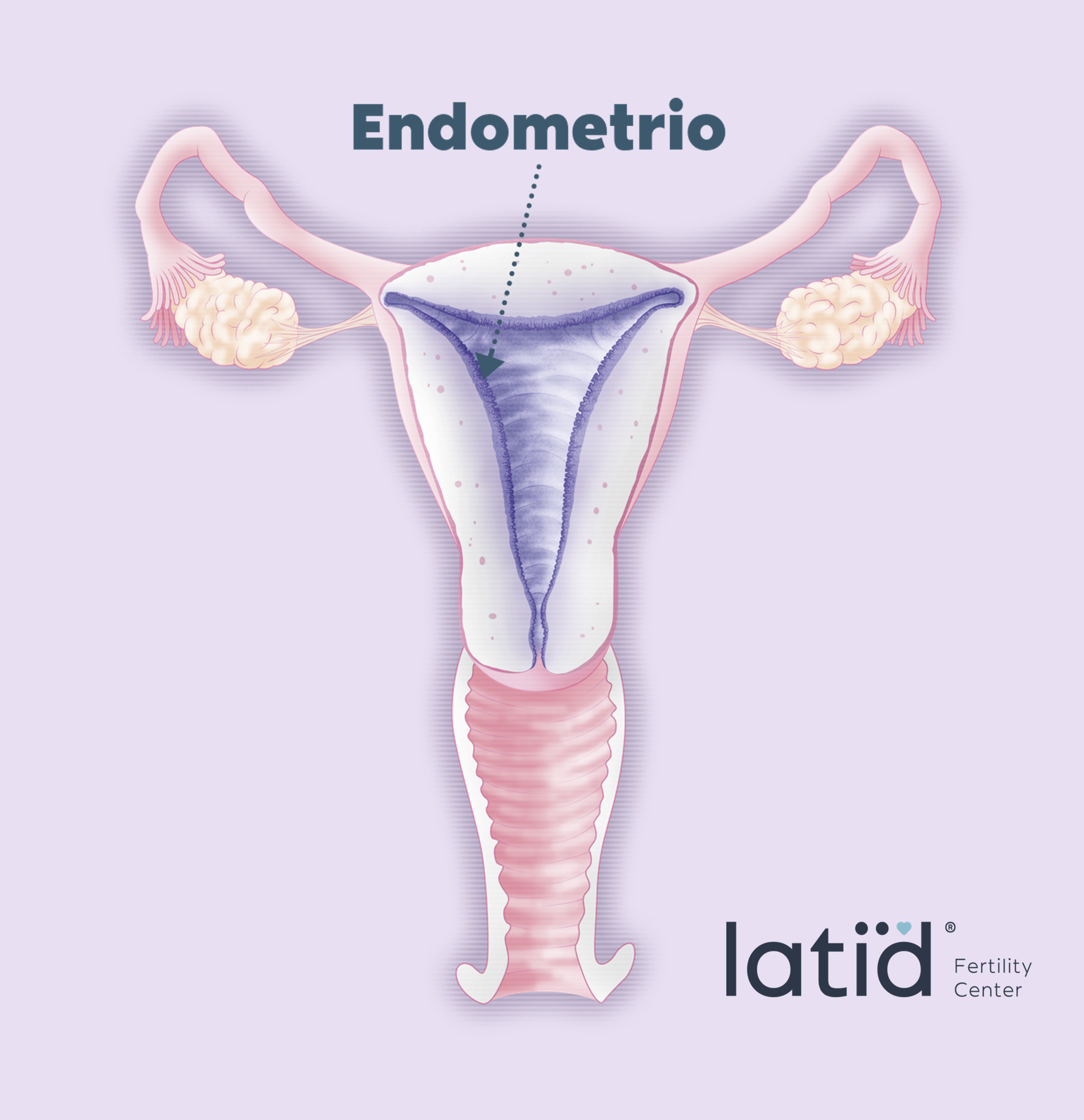Test WAS and the Window of implantation
In the world of infertility, usually we hear talk a lot about the ovarian reserve and the quality of embryos, but it is just as important to the function of the endometrium, because if you're not prepared or not there is a correct recognition embryo-endometrium, by more that we have the best embryo as possible, we will not be able to conceive. Here is where lies the importance of the study of the endometrium in assisted reproduction.
Before I tell you about the tool that we have in Latid to study the endometrium, and the window of implantation, we must know that the endometrium is the mucosal tissue that lines the inside of the uterus, which thickens throughout the menstrual cycle with the goal to prepare to receive a possible embryo, its function was to host such an embryo, allowing its implementation.
The Test WAS of receptivity, endometrial is a test that determines when is the best time for embryo implantation from a molecular viewpoint. We're going to explain what is the receptivity, endometrial, and as the ERA test it is an invaluable tool to enhance the possibility of conception under assisted reproduction techniques.
What is the receptivity of endometrial?
Within a natural cycle of ovulation, your body undergoes numerous changes produced by your hormones. A large part of these changes are related to the endometrium. The thickness of the endometrium varies by the action of sex hormones (estrogen and progesterone) with different objectives: to prepare for a possible implantation of the embryo, or, in the case of not having pregnancy, prepare to evacuate through menstruation.
Throughout the menstrual cycle, the structure of the endometrium is going building to prepare for the reception of the possible embryo. If it has been produced by the fertilization of the egg, the resulting embryo will travel from the fallopian Tubes to the wall of the endometrium in about 5-7 days. If the endometrial this receptive, it will result in the implementation. An endometrial receptive is only a few days of the menstrual cycle. This period is known as window of implantation, and usually happen between 19-21 days since the start of the last rule (5-7 days after ovulation). In the moment of greater receptivity of endometrium, the endometrium, in addition to having the proper thickness has the nutrients necessary for a successful interaction with the embryo. This is key to ensure that the embryo will implant successfully, but also for the development of the placenta is necessary for a viable pregnancy. Knowing this window of implantation can be a decisive factor to achieve a pregnancy through assisted reproduction, and with the ERA test, it is possible to determine this.
What is the test WAS of receptivity, endometrial?
The Test WAS a diagnostic test of the molecule, which consists of taking a biopsy of the endometrium during the days in which we think are the window of implantation of the patient. This is usually the day 21 of the menstrual cycle (receptive phase) or after 5 full days of impregnation of progesterone in a cycle replaced. This allows to know the state of receptivity of the endometrium. Thanks to this test, reduce the chances of a crash of implementation, as it allows you to determine the appropriate day to perform the embryo transfer.
How the test WAS?
The specialist will take a sample of the endometrial tissue and placed in a Cryotube WAS that allows to preserve the sample tejio to be submitted to analysis. We analyzed the expression of 238 genes involved in the receptivity of endometrial to assess the stage of the endometrium and to determine if the woman has a profile gene of receptivity of the endometrium at the time of the completion of the biopsy. The results of the test are in approximately 20 days.
The results will indicate if:
- The endometrium is receptive: the window of implantation, is located on the very day on which I perform the biopsy and the endometrium is receptive during those days. Transfer of embryos should be carried out subsequently, during those same days, in order to optimize the implementation.
- The endometrium is non-responsive: It may be that the endometrium is not receptive during those days. In this case, the analysis may suggest to perform a second biopsy by changing the day of the taking of the sample, to assess if the window of implantation may be displaced.
This simple test allows us to calculate which is the best time to transfer the embryos after In Vitro Fertilization, in a personalized way for each woman, coordinating the best conditions of the endometrium and the best embryos for implantation is carried out successfully.
In Latid Fertility Center you can find this option that will allow you to increase your chances of achieving a pregnancy. If you want to know more, you can make your appointment by calling the 2508-4300 to schedule a consultation with our specialist.

